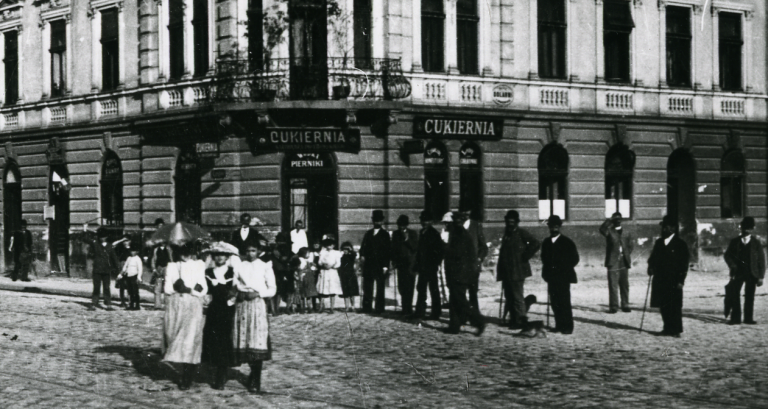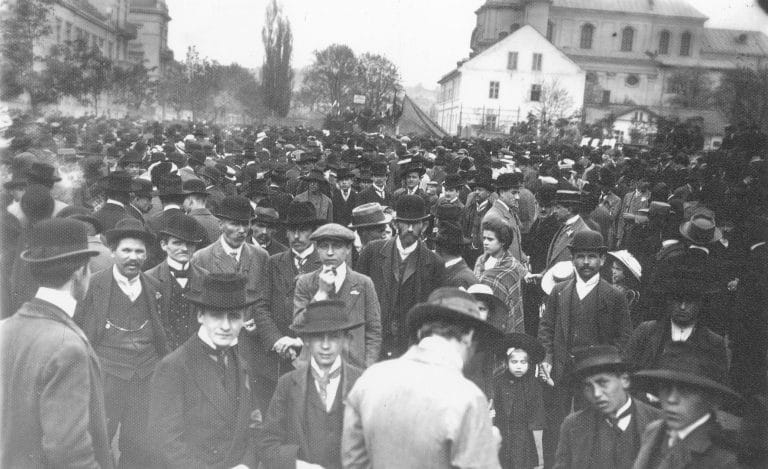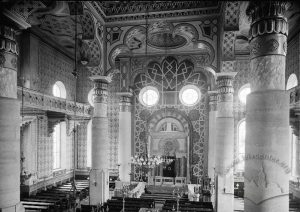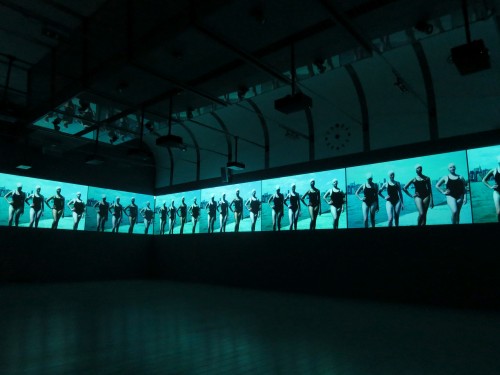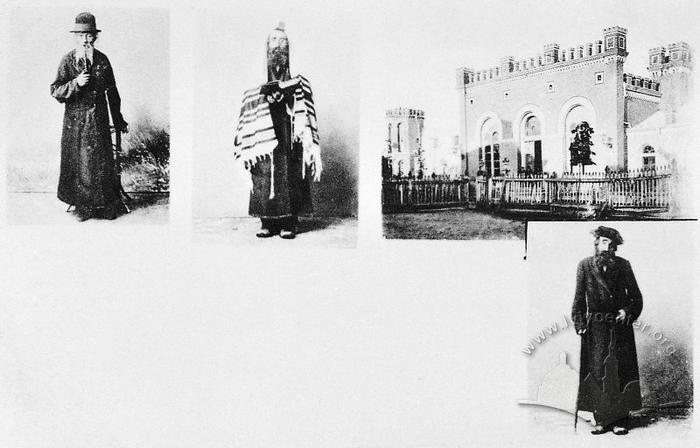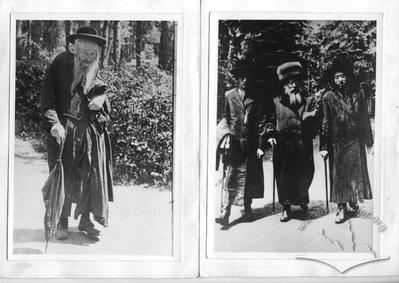1870s
Primary Sources

Volodymyr Shcherbytskyi on Male Domination in Soviet Leadership, 1977
At a meeting with the heads of the Communist Party of Ukraine and state bodies, as well as regional leaders, current issues of the republic and planning for 1978 were discussed. After several speakers, the First Secretary of the Central Committee of the CPU, Volodymyr Shcherbytskyi, took the floor. Listing shortcomings in the current implementation of economic plans and in planning for the coming year, he called on those present to consider candidates for election at the upcoming party conferences and to create a reserve of personnel, particularly among women. Among the one hundred people present at the meeting, there was only one woman — Domnikiia Yosypivna Protsenko, head of the Kherson Regional...
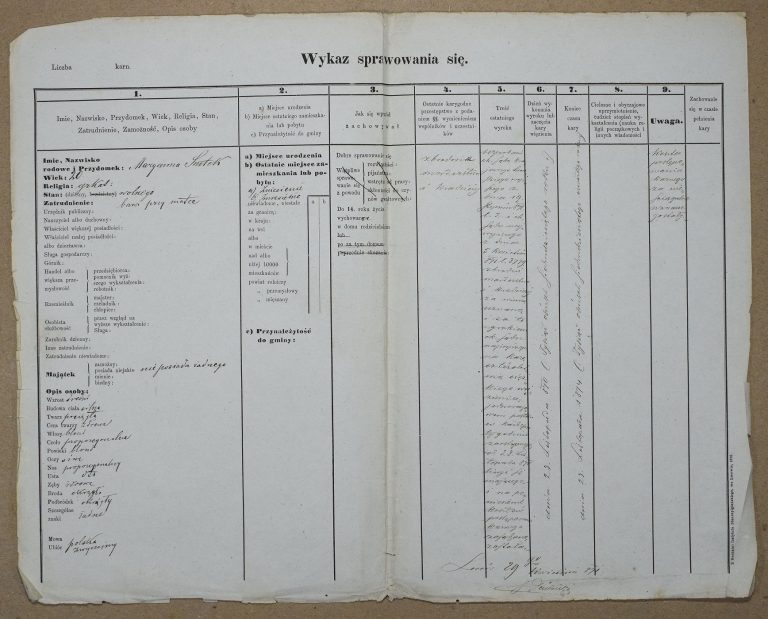
The Case of Maria Shutek on Infanticide, Lviv, 1870-1871
This text presents a fragment of Maria Shutek’s interrogation in her 1870 infanticide trial, where she was accused by the Lviv Regional Court. In her testimony, she provides her account of the crime and the circumstances leading up to it. The detailed autobiographical statement required from defendants for investigative purposes not only sheds light on the crime but also offers a window into Shutek’s life. Though such accounts were written more out of compulsion than voluntary reflection, the autobiographical narratives of criminal cases paradoxically offer a more balanced representation than traditional autobiographies. This is because they were cross-referenced and corrected by the testimonies of others during their creation. For legal purposes, these narratives...
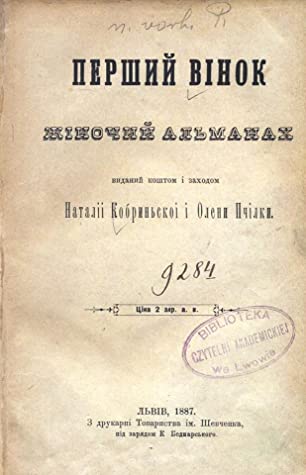
Anna Pavlyk Essay “Worker girl” Lviv, 1887
It is a polemical essay by a young Ukrainian socialist, Anna Pavlyk, about urban female workers and the challenges of their status as wage-earners and low-paid participants in the urban labor market. Anna knew about the peculiarities of this status from the first month. The woman worked as a seamstress or a maid for most of her life. The essay was published in Lviv in 1887 in a women's almanac, "The First Wreath." It was initiated and published by writers Natalia Kobrynska and Olena Pchilka as the first Ukrainian-language publication of women authors. Anna Pavlyk attempts to produce a collective portrait of the lowest strata of the social ladder – the daughters of...
In the 19th century, the gender pact dividing public and private spheres, as man-owned and women-inhabited, found its most solid reasoning. In this vision, the city as the most obvious embodiment of public life, seemed to be male by default. Women in the city were taken as potentially threatened. This was evidenced by a number of prohibitions, which could include not only certain places inaccessible to women, such as universities in Lviv until the late 1890s, but also ordinary everyday experiences that they could claim only at the cost of their own reputation. In this module, historian Ivanna Cherchovych will try to look at the city from its women's experiences.
The "The City as a Stage: When Politics Takes to the Streets" project focuses on mass events in the public space of Lviv during the Habsburg period, which took place in the open air – on the streets and squares of the city. As the political center of Galicia, the "royal capital city" of Lviv was simultaneously considered the "capital of the freest part of Poland" and the "capital of Prince Lev." Political and national confrontations were concentrated here. Although the population of Lviv at that time consisted mainly of Poles and Jews, followed by Ukrainians, it was the competition between Ukrainians and Poles that was most significant. These two groups declared their...
This research focuses on three women: 20-year-old Maria Shutek from Znesinnia [the area of Lychakivskyi District in Lviv, t\n], put on trial for the murder of her daughter Sofia in Lviv in May 1870; a 45-year-old midwife from Virmenska st. [Armenian street, t\n] named Klara Weisshaar, accused of complicity in the crime of abortion, which she helped to perform on a servant named Katarzyna Słodka in March 1905; and 35-year-old Elżbieta Wenne, convicted of pimping out her daughter in 1887. The stories told by these women are not the stories of victims. At least, it would be hard to call them that. These stories are about choices made, mistakes and their consequences, human...
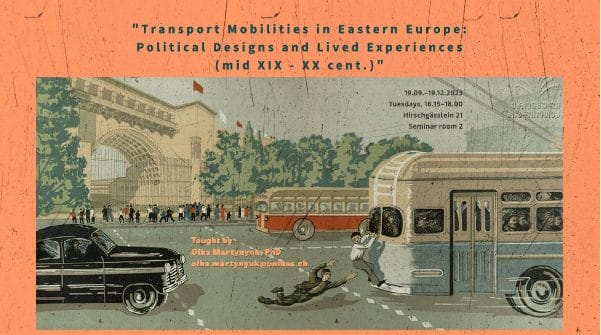 Transport Mobility in Eastern Europe: Political Designs and Lived Experiences (mid XIX – XX Century)
Transport Mobility in Eastern Europe: Political Designs and Lived Experiences (mid XIX – XX Century)
The course invites to explore East-European History of mid XIX - late XX cent. through the concept of mobility, which encompasses movement of people, goods and ideas. Students will deal with a corpus of texts on social history of transportation, as well as with a rich array of visual materials. Of special interest will be cases, specific to the region, for example cultures of Christian and Muslim pilgrimage, Socialist rallies, trolleybus infrastructures or “destalinization” of metro stations. Cases of imported western technologies will provide ground for interregional comparisons, not only in aspects of introduction of transport system, but also in aspects of their exploitation and disintegration. The course is built on a premise...
The course explores the history of Russia as an empire from Peter I up to now in the methodological perspective of the new imperial history. What are the historical preconditions and sources of Russian imperialism and militarism? How did the small principality of North-Eastern Europe manage to create the largest empire in the world? To what extent the Russian Empire of the 18th and 19th centuries differed from European colonial empires as well as eastern imperial polities such as Ottoman Empire and China? How did the imperial nationalities policies emerge and evolve? What role did the competition between "great powers" play in turning Russia into an empire? The course attempts to answer these...
The field of social history has achieved the edge of its popularity in 1950-1980s. It was strongly connected with other disciplines, such as economics, demography, sociology, and allowed historians to reach a much wider range of research themes. Since the 1960s, the social history of the Jewish people became important and influential part of the studies. Historians were exploring the possibilities to study Jewish community with new tools and integrating different representatives of Jewish community – workers, women, immigrants, criminals - in a research. Since 1990s historians of Jewish past shifted their interest to cultural studies. However, in the last years, we can see an economic turn, which signifies the search for a...
The aim of the course is to get to know how to analyze examples of visual culture, including: fiction films and documentaries, video, photography. Both contemporary and historical materials will be studied, together with theoretical texts and publications (from the area of film and media studies, anthropology, cultural studies and history. Although images are mostly seen, if you want to really know them and understand them really well, you must not only "see" them but also "read" them, that means to analyze them as a complex message/ text. That is why at our course we will firstly discuss some terms and categories, that would help us to read images such as: composition, convention,...
This course forms a part of Jewish History and Culture of East Central Europe in the 19th-20th Centuries summer school. The syllabus is availible only in Polish.
This course was a part of Jewish History and Culture of East Central Europe in the 19th-20th Centuries summer school. The syllabus is written in Polish.
This short course looks at Jewish history in the context of two multinational empires: the Russian and the Habsburg. Both of these states must be understood as fundamentally pre-modern, non-national (even anti-national) political structures, a fact that is crucial for understanding Jewish history here. In the mid-19th century, the great majority of world Jewry made its home in this region and even at the end of the First World War, after the great wave of emigration to the Americas, western Europe, Erets Israel / Palestine, and South Africa, the Jewish presence here was considerable. In 1918 even antisemites could hardly imagine a Warsaw, Wilno, Lwów, Odesa (etc.) without Jews.
Ukraine’s twentieth century was tragically marked by much politically motivated violence and authoritarian regimes as well as movements, from the radical left and the radical right. These forces and events did not only do great harm in the past but left memories and legacies that are still challenging to contemporary Ukraine. In this class, we will focus on several key issues of history, memory, and politics. The readings cannot be exhaustive. Instead, our aim is to read and discuss a sample of important short texts that allow us to reflect more broadly on the underlying questions.
This course was a part of Jewish History, Multiethnic Past, and Common Heritage: Urban Experience in Eastern Europe summer school (July 13 – August 7, 2015. Center for Urban History. Lviv, Ukraine).
This course forms a part of Jewish History, Multiethnic Past, and Common Heritage: Urban Experience in Eastern Europe summer school. The syllabus is available only in Polish.
This course forms a part of Jewish History, Multiethnic Past, and Common Heritage: Urban Experience in Eastern Europe summer school.
The course will cover the major development of the East European Jewry from the mid-eighteenth century till the present. More specifically, it will focus on the apparently largest category of modern Jewish history, i.e. modernity itself. The course will start with the discussion of what modernity means in contemporary scholarly discourse, and—more specifically—how it is applied today in historiography of East European Jewry. This introduction will provide a frame for the focus of the course: the analysis of the changing life patters and differing strategies of adopting, rejecting, or negotiating modernity in every-day lives of East European Jews.

